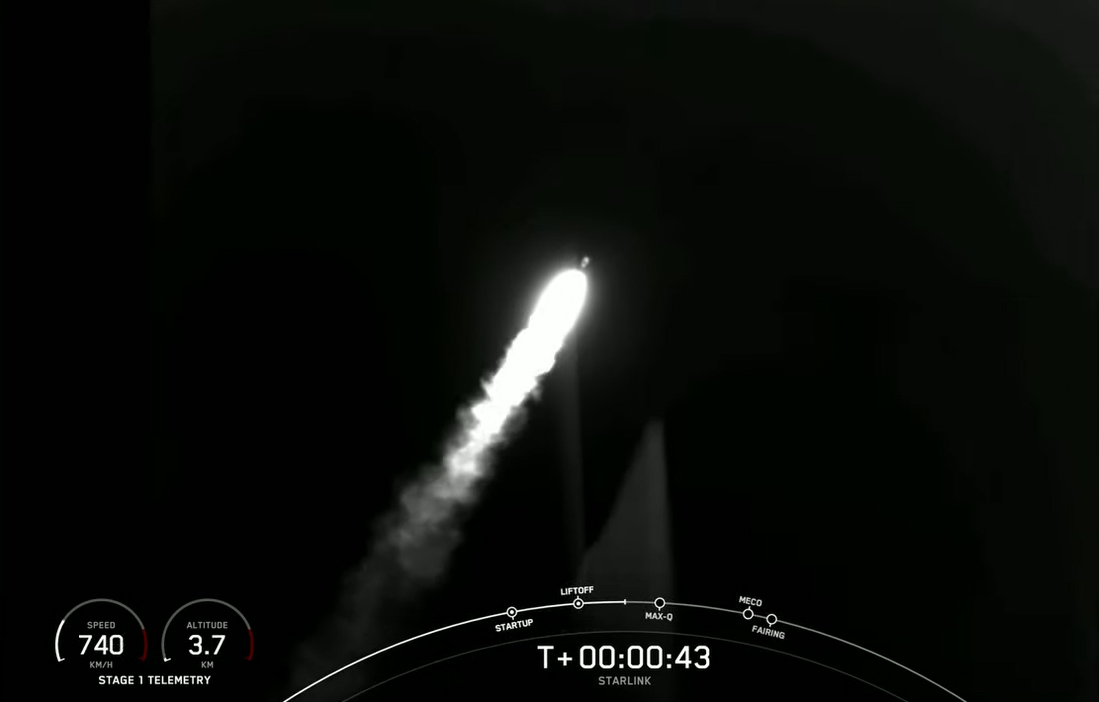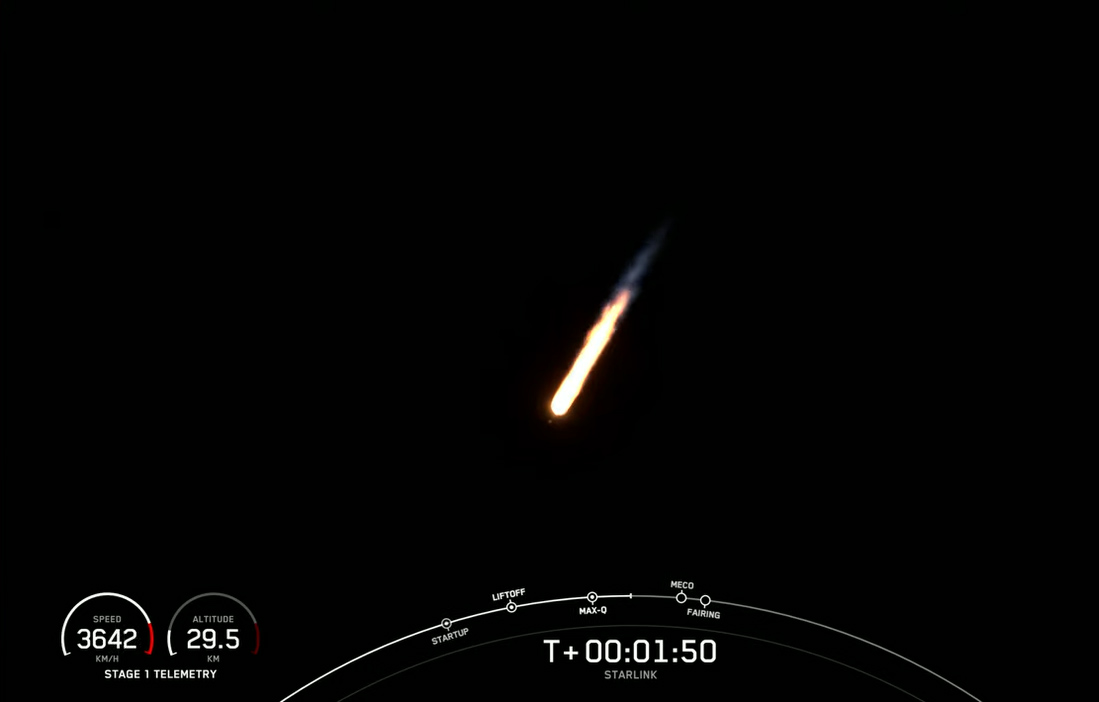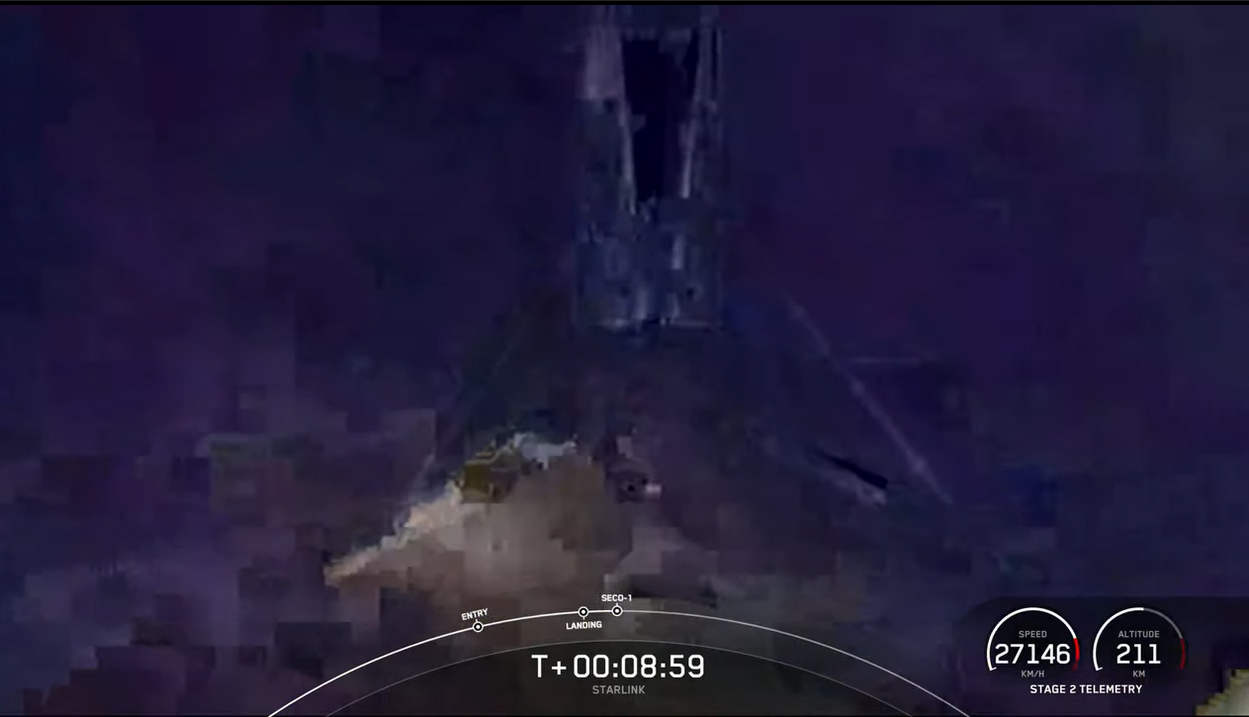SpaceX launches Falcon 9 rocket on record 11th flight carrying 52 Starlink satellites
SpaceX has a new most-flown rocket.
CAPE CANAVERAL, Fla. — SpaceX successfully launched a Falcon 9 rocket for a record 11th time Saturday (Dec. 18), sending a new stack of Starlink satellites into orbit from California in a predawn liftoff.
The previously flown Falcon 9 rocket blasted off at 7:41 a.m. EST (1241 GMT, 04:41 a.m. local time) from Space Launch Complex 4E at Vandenberg Space Force Station in California, carrying a stack of 52 Starlink satellites.
Approximately nine minutes after liftoff, the rocket's first stage returned to Earth and touched down on the deck of SpaceX's most prolific drone ship, "Of Course I Still Love You", marking the company's 98th successful landing. With its record 11th flight in the books, the Falcon 9 booster is SpaceX's most-flown rocket yet.
"We did just have a successful landing first stage landing," Youmei Zhou, a propulsion engineer for SpaceX, said during a live launch broadcast. "Our 98th overall landing of an orbital class rocket."
Related: SpaceX's Starlink satellite megaconstellation launches in photos



Saturday's early morning liftoff is one for the record books as it marks the 29th Falcon 9 mission for SpaceX so far in 2021, further solidifying a new company record for the most number of rocket launches in a year. (That record was previously set in 2020, with SpaceX launching 26 Falcon 9 rockets.)
If all goes as planned, the company could launch a grand total of 31 Falcon 9 missions this year, as there are two more launches on the calendar, which will both lift off from Florida.
Get the Space.com Newsletter
Breaking space news, the latest updates on rocket launches, skywatching events and more!
The first of those missions will launch a communications satellite called Turksat 5B less than 19 hours after the Starlink mission sailed into orbit — a new company record. Liftoff is set for 10:58 p.m. EST (0358 GMT Sunday) from a pad at the Cape Canaveral Space Force Station.
On Tuesday (Dec. 21), SpaceX is scheduled to launch another Falcon 9 rocket carrying a Dragon cargo ship to the International Space Station for NASA from the agency's Launch Pad 39A at the Kennedy Space Center in Florida.
More Starlink satellites in orbit
Saturday's flight continues SpaceX's efforts to expand and upgrade its burgeoning Starlink internet constellation. This is the fourth flight to carry its newly upgraded Starlink internet satellites, as the company recently equipped each of the flat-paneled satellites with the ability to communicate with each other via laser links. This will increase efficiency and reduce the constellation's reliance on ground stations down here on Earth, company officials have said.
This launch brings the total number of Starlink satellites launched up to 1,944 since May 2019. It also has an unusual orbit, which will hug the coast of California as the satellites are eventually expected to reach a parking spot that's a bit more centralized. (Typically, launches from California target a more polar trajectory.)

SpaceX has five orbital shells designed to be filled with roughly 4,400 Starlink internet satellites. These shells will be located at various altitudes above the planet, between 335 and 348 miles (540 and 560 kilometers) and at inclinations of 53, 53.2, 70, and 97.6 degrees. (The inclination is the angle between the orbital plane and the equator.)
To date, the 53-degree shell has been filled and SpaceX is turning its sights to other inclinations. Of the recent Starlink missions to launch, two payloads have been deposited into the 53.2-degree inclination and one into the 70-degree slot. That launch blasted off from California in Sept.
Saturday's mission will fill another spot in the 53.2-degree orbit, marking a switch to a non-polar orbit for a California payload.
SpaceX aims to use its Starlink megaconstellation to connect people around the globe to the internet, particularly those in rural and remote areas who have little-to-no connectivity. Company officials have said that the program now serves more than 100,000 subscribers in 20 countries and is still growing.
Related: SpaceX's most-flown Falcon 9 rocket is a sooty veteran after 10 launches and landings (photos)
Falcon 9's record launch no. 11

SpaceX landed its first booster in 2015 and has been refining its reusability tactics ever since in an effort to streamline processes, get more use out of its boosters and further reduce costs. To that end, in 2018, the company introduced the version of Falcon 9 that we see flying today: the Block 5. This souped-up version featured a more robust thermal protection system, titanium grid fins, and a more durable interstage (the part that connects the first stage with the upper stage). These enhancements led to the rapid reusability SpaceX sees today.
The rocket featured in Saturday's mission is one of the oldest in SpaceX's fleet. Dubbed B1051 by SpaceX, the booster is now the most flown rocket, with 11 launches and landings under its belt. Its counterpart, B1049, is the only other rocket with 10 flights. (Additionally, SpaceX has two other boosters that have successfully flown 9 times.)
B1051 was first introduced in March 2019 as part of Demo-1 mission, which launched SpaceX's first Crew Dragon spacecraft to the International Space Station as part of an uncrewed demonstration mission for NASA.
The Falcon 9 booster has also carried a trio of Earth-observing satellites for Canada, a broadband satellite for Sirius XM, and — as of Saturday's mission — eight Starlink satellite groups.
When the Block 5 Falcon debuted in 2018, SpaceX founder and CEO Elon Musk speculated that each Falcon 9 would be capable of flying 10 times with very few refurbishments in between flights and as many as 100 times before retirement. As the company has recovered and reflown more rockets, SpaceX engineers are using that 10-flight threshold as just a guideline; as each Falcon 9 may be capable of many more flights.
In April, Musk said that the company would continue to push Falcon 9 to its limits to see how many flights and how much performance the company can get out of each rocket before any kind of major refurbishments are required. SpaceX will be using its own payloads like Starlink to do that.
Follow Amy Thompson on Twitter @astrogingersnap. Follow us on Twitter @Spacedotcom or Facebook.
Join our Space Forums to keep talking space on the latest missions, night sky and more! And if you have a news tip, correction or comment, let us know at: community@space.com.

Amy Thompson is a Florida-based space and science journalist, who joined Space.com as a contributing writer in 2015. She's passionate about all things space and is a huge science and science-fiction geek. Star Wars is her favorite fandom, with that sassy little droid, R2D2 being her favorite. She studied science at the University of Florida, earning a degree in microbiology. Her work has also been published in Newsweek, VICE, Smithsonian, and many more. Now she chases rockets, writing about launches, commercial space, space station science, and everything in between.









